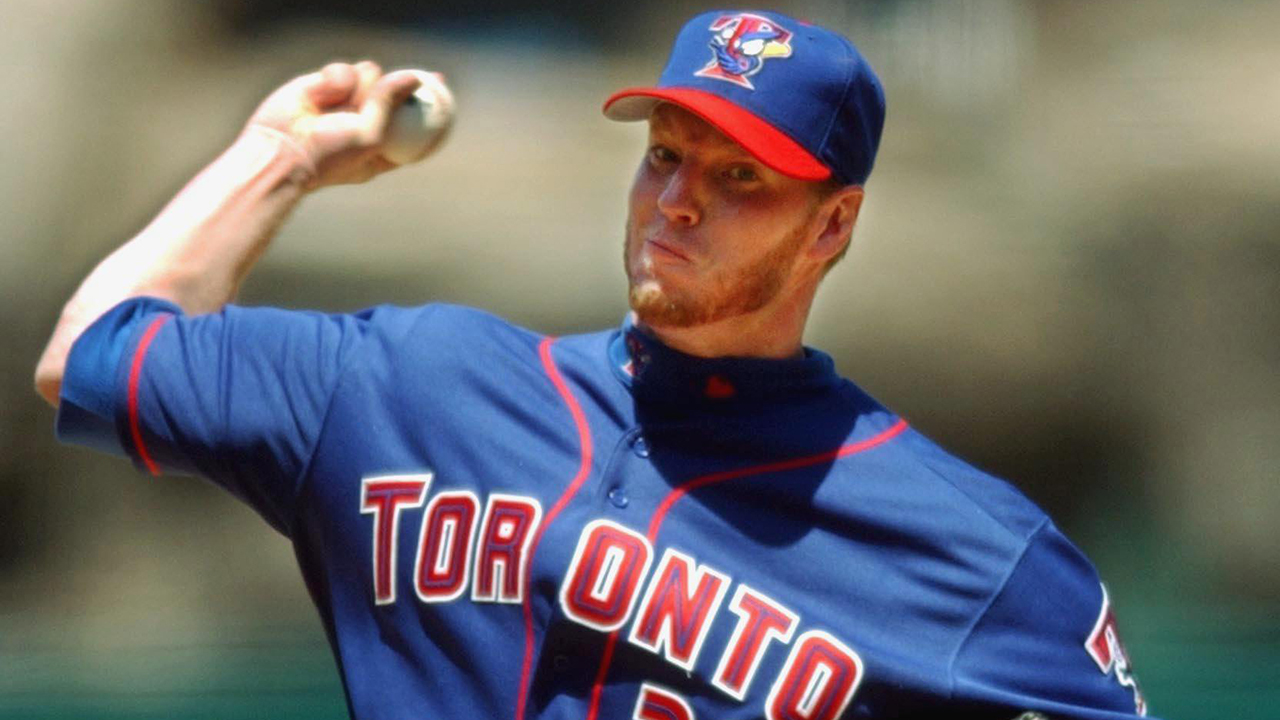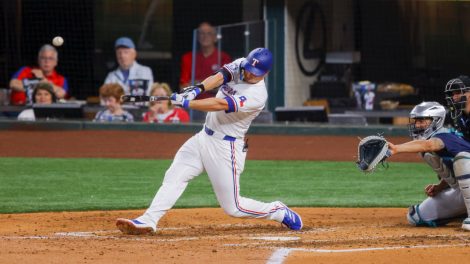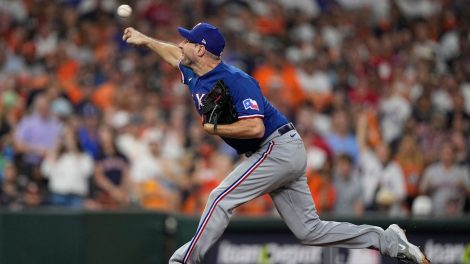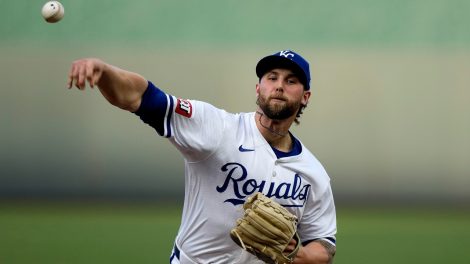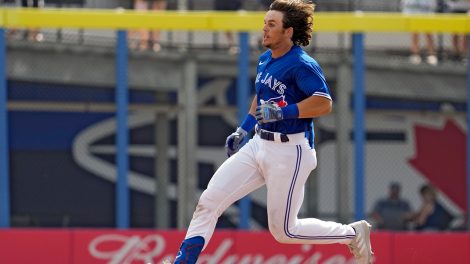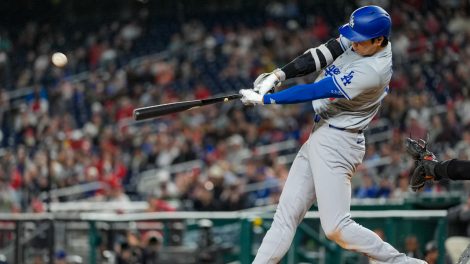TORONTO – The two most iconic pitchers in Toronto Blue Jays history took the field Sunday as part of the club’s 40th season celebrations, and the workloads Dave Stieb and Roy Halladay carried during their illustrious careers are striking when you consider how arms are handled these days.
An outfielder when he was selected in the fifth round of the 1978 draft, Stieb threw 26 innings as a 20-year-old in his first pro season, watched that number balloon to an unfathomable 231.1 in 1979 and then to 242.2 in 1980. After a dip to 183.2 innings in 1981, he delivered a career-high 288.1 in 1982.
All that was part of an 11-season stretch in which he broke the 200-mark nine times.
Halladay, meanwhile, threw 50.1 innings in 1995 as an 18-year-old after being chosen 17th overall, and the next season he logged 164.2 frames. He remained around that level until he broke through the 200 plateau in 2002 with 239.1 innings, reaching a career-best 266 during his Cy Young campaign of 2003.
From 2002-2011, he broke 200 eight times, falling short in 2004 when shoulder problems limited him to 133 innings, and in 2005 when a Kevin Mench comebacker broke his left fibula and spoiled what looked like another Cy Young campaign.
Compare that to the justifiable caution with which the Blue Jays are handling Aaron Sanchez, who is at 152.1 and counting this season, having already surpassed his previous career-best of 133.1 set in 2014.
In their own words, here’s how Stieb and Halladay handled their workloads:
Dave Stieb
“Taxing my arm like that was new to me. The thing we did was just ice it after the game and then and just soft-toss the next day to loosen it up and get the kinks out.
Throw on the side the next day, light toss the next day after that and then pitch again. It seemed like the ice and that routine pretty much allowed me to recover well enough to continue the process.
“I took [the pain] in stride, it was just something I had to do. Of course it hurt, you were sore the next day, but you just get used to it as something you know is going to be there. You’d slowly loosen it up and work out the kinks and get it back to pitching stamina again. It’s no science or whatever, it’s just the process you had to go through.
“[After the season it was] just total rest and recovery and go at it again the next year. I welcomed the rest, because I had a heavy workload, which at the time, I didn’t look at it as heavy. It was just something I had to do and I enjoyed doing it. It was fun, and I took on the attitude from the beginning that I wanted to finish what I started.
“I missed [the pitch-count era]. When I came back [in 1998], I was in the bullpen and I spot-started here and there, so obviously I wasn’t going to throw 120, 130 pitches because my arm wasn’t accustomed to that. They kept track of it, but they didn’t say you’re at 100, you’ve got to get out.
“It was toward the end of the first part of my career where they started realizing that after 100 pitches the quality of your pitches seemed to dwindle. That’s when they started looking at that aspect of it. And it makes sense, you get tired, you drop your arm, you don’t follow through, this and that. They started realizing at that point that maybe 100 pitches, for some, is a time to come out.
“Before the magic number of 100, I think they’d watch you and look at you and they could tell by that, or they’d ask you how you feel.”
—
Roy Halladay
“What you throw in the season is fine. What you have to do is be able to adjust in the winter and that’s where I screwed up. I had the same program in the winter come hell or high water and I threw the 266 [in 2003 after 239.1 in 2002] and then I threw 133. If you have a longer season you need to back yourself off. Maybe they can start [Sanchez] two or three starts back [the next year], let him work his way into the season, but I think it’s very important that you adjust him. Same in the bullpen [between starts], you throw 120 pitches out there, don’t go down and throw 60 in the bullpen. Being able to adjust is the big thing.
“And I know the trainers here are on that, but [Sanchez] can’t be on the same program everyone else is. They’re going to have to be careful, slow him down and then taper him into a season. …
“Really, it’s just listening to your body and it’s hard as a young player because you don’t really know yet what it’s going to take to be consistent for a season. My best thing would be to sit down with the trainers and develop a program based on him with the idea in mind of being careful about the extra work he did during the season.
“Instead of being ready to pitch in a nine-inning game his first start in spring training, be ready to throw a strong 45-pitch bullpen. Then take 15 down there and 30 out on the field, just back it up enough to where he’s working his way into it. But at this point of his career, he really needs to lean on the training staff. George [Poulis] knows what I went through, let them lead him in the right direction.”

